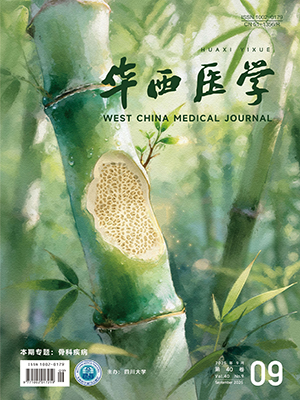| 1. |
Zwi A. The public health burden of injury in developing countries[J]. Trop Dis Bull, 1993, 90(1):R5-R45.
|
| 2. |
Mock C. Improving prehospital trauma care in rural areas of low-income countries[J]. J Trauma, 2003, 54(6):1197-1198.
|
| 3. |
Kocabaş E, Sarikçioğlu A, Aksaray N, et al. Role of procalcitonin, C-reactive protein, interleukin-6, interleukin-8 and tumor necrosis factor-alpha in the diagnosis of neonatal sepsis[J]. Turk J Pediatr, 2007, 49(1):7-20.
|
| 4. |
Long W, Deng X, Zhang Y, et al. Procalcitonin guidance for reduction of antibiotic use in low-risk outpatients with community-acquired pneumonia[J]. Respirology, 2011, 16(5):819-824.
|
| 5. |
Tang J, Long W, Yan L, et al. Procalcitonin guided antibiotic therapy of acute exacerbations of asthma:a randomized controlled trial[J]. BMC Infect Dis, 2013, 13(13):596.
|
| 6. |
Jacobs W, Lund PK, Potts JJ, et al. Procalcitonin is glycoprotein[J]. J Biol Chem, 1981, 256(6):2803-2807.
|
| 7. |
Brunkhorst FM, Wegscheider K, Forycki ZF, et al. Procalcitonin for early diagnosis and differentiation of SIRS, sepsis, severe sepsis, and septic shock[J]. Intensive Care Med, 2000, 26(Suppl 2):S148-S152.
|
| 8. |
Nakamura A, Wada H, Ikejiri M, et al. Efficacy of procalcitonin in the early diagnosis of bacterial infections in a critical care unit[J]. Shock, 2009, 31(6):586-591.
|
| 9. |
Uzzan B, Cohen R, Nicolas P, et al. Procalcitonin as a diagnostic for sepsis in critically ill adults and after surgery or trauma:a systematic review and meta-analysis[J]. Crit Care Med, 2006, 34(7):1996-2003.
|
| 10. |
Dandona P, Nix D, Wilson MF, et al. Procalcitonin increase after endotoxin injection in normal subjects[J]. J Clin Endocrinol Metab, 1994, 79(6):1605-1608.
|
| 11. |
Billeter A, Turina M, Seifert B, et al. Early serum procalcitonin, interleukin-6, and 24-hour lactate clearance:useful indicators of septic infections in severely traumatized patients[J]. World J Surg, 2009, 33(3):558-566.
|
| 12. |
Cleć h C, Ferriere F, Karoubi P, et al. Diagnostic and prognostic value of procalcitonin in patients with seotic shork[J]. Crit Care Med, 2004, 32(5):1166-1169.
|
| 13. |
Jensen JU, Heslet L, Jensen TH, et al. Procalcitonin increase in early identification of critically ill patients at high risk of mortality[J]. Crit Care Med, 2006, 34(10):2596-2602.
|
| 14. |
刘少锋, 杨健, 刘敏. 降钙素原与创伤的研究进展[J]. 华西医学, 2012, 27(5):789-793.
|
| 15. |
降钙素原急诊临床应用专家共识组. 降钙素原(PCT)急诊临床应用的专家共识[J]. 中华急诊医学杂志, 2012, 21(9):944-951.
|




